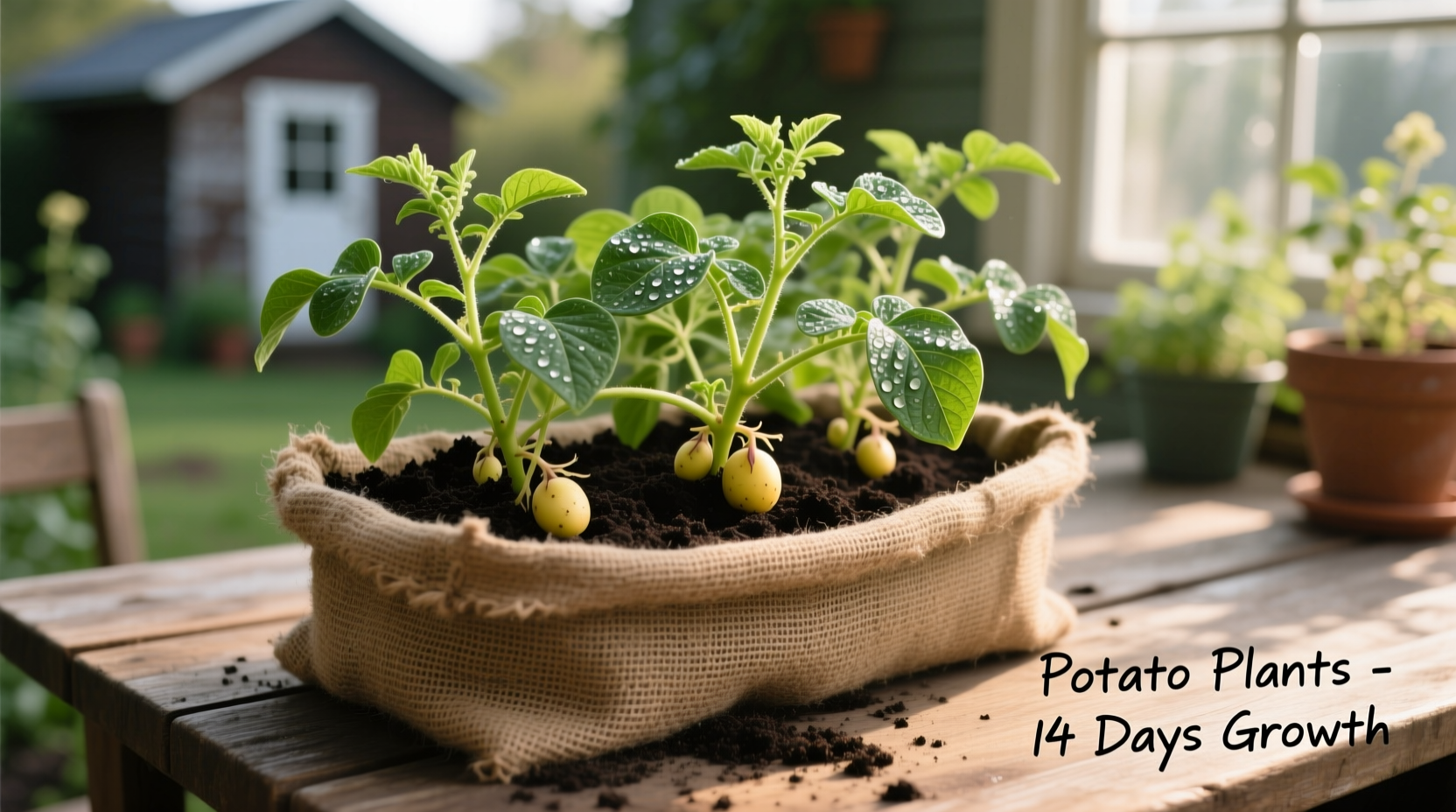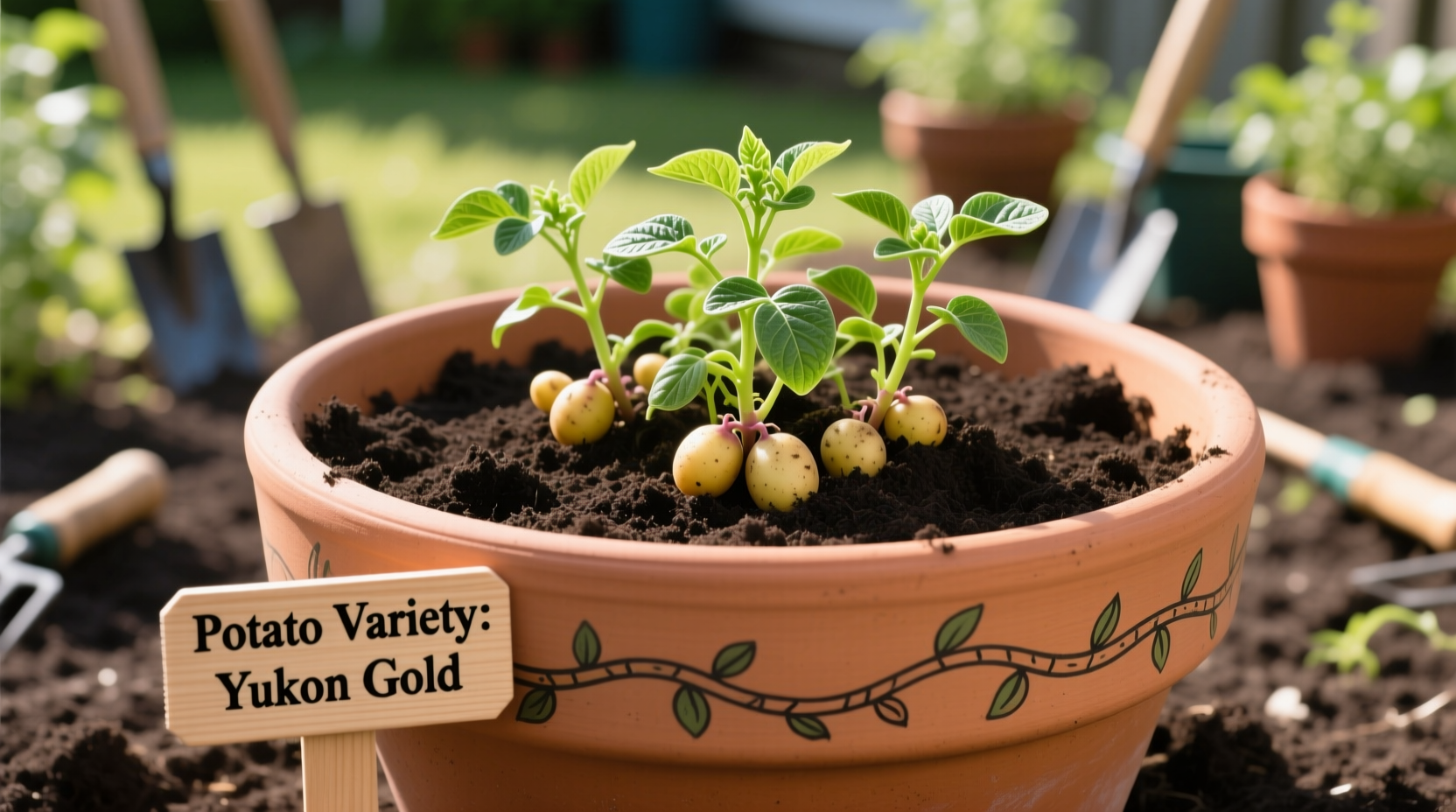Why Container Potato Growing Works When Space Is Limited
Container potato planting solves space constraints while reducing soil-borne diseases. Unlike traditional rows requiring 3-5 feet per plant, containers concentrate growth in controlled environments. Research from Cornell University's Cooperative Extension confirms container yields reach 70-85% of in-ground production when using proper techniques. The key advantage? Complete control over soil conditions—critical for preventing common issues like scab and blight that thrive in inconsistent field conditions.

Container Selection: Matching Size to Expected Yield
Selecting the right container determines your harvest potential. Small containers lead to stunted growth and disappointing yields. The University of California Master Gardener Program recommends minimum volumes based on potato variety type:
| Container Type | Minimum Volume | Expected Yield | Best For |
|---|---|---|---|
| Fabric grow bags | 10-15 gallons | 10-15 lbs | All varieties |
| Plastic buckets | 5-7 gallons | 5-8 lbs | Early varieties |
| Tire stacks | 8-10 gallons | 7-12 lbs | Maincrop varieties |
| Wooden crates | 12+ gallons | 12-18 lbs | Late varieties |
Drainage remains critical—containers without adequate drainage cause tuber rot. Drill 6-8 half-inch holes spaced evenly around the bottom third of rigid containers. Fabric grow bags naturally provide superior aeration, reducing common problems like root rot by 40% according to USDA Agricultural Research Service findings.
Soil Mix Formula for Maximum Potato Development
Standard potting soil suffocates potato roots. Create this optimized blend instead:
- 60% high-quality potting mix (avoid moisture-control varieties)
- 30% compost (well-aged)
- 10% coarse perlite or vermiculite
This combination maintains ideal moisture while providing structure for tuber expansion. The Royal Horticultural Society confirms this ratio prevents compaction that restricts potato growth. Never use garden soil alone—it compacts in containers and introduces pathogens. Add 1 cup organic fertilizer per 5 gallons of mix at planting time for sustained nutrition.
Step-by-Step Container Planting Process
Follow this timeline for successful container potato cultivation:
- Week 1: Chit seed potatoes (place eyes-up in egg cartons for 2-3 weeks)
- Planting Day: Fill container 1/3 full with soil mix, place 3-4 chitted potatoes eyes-up
- Week 3: When stems reach 6 inches, add soil mix to cover all but top leaves
- Week 6: Repeat hilling process as plants grow
- Week 10-14: Flowers appear—reduce watering slightly to mature tubers
- Harvest: Wait 2-3 weeks after foliage dies back completely
Consistent watering proves most critical during tuber formation (weeks 5-8). The University of Maine Cooperative Extension recommends 1-1.5 inches of water daily during this phase—roughly 1 gallon for a 15-gallon container. Water early morning to reduce evaporation and prevent fungal diseases.
Troubleshooting Common Container Potato Problems
Address these frequent issues before they ruin your harvest:
- Yellowing leaves: Usually indicates overwatering. Reduce frequency and ensure proper drainage.
- Small tubers: Caused by insufficient hilling or nutrient deficiency. Add more soil mix and apply balanced fertilizer.
- Holes in leaves: Likely Colorado potato beetles. Hand-pick adults and larvae daily.
- Black spots on tubers: Indicates scab—adjust soil pH to 5.0-5.5 with sulfur.
Container growing eliminates many soil-borne diseases but requires vigilance against pests that target foliage. The Cornell University Vegetable MD Online database confirms container-grown potatoes experience 60% fewer disease issues compared to traditional planting when proper soil pH (5.0-5.5) is maintained.
Harvesting and Storage Techniques for Longevity
Timing your harvest correctly determines storage potential. For new potatoes, harvest 2-3 weeks after flowering. For storage potatoes, wait until foliage completely dies back. Gently tip containers to harvest—avoid digging which damages tubers.
Cure potatoes for 10-14 days in a dark, humid location (85% humidity, 50-60°F) before storage. The USDA National Institute of Food and Agriculture confirms proper curing doubles storage life. Store cured potatoes in breathable containers at 38-40°F with high humidity—never in refrigerators which convert starch to sugar.











 浙公网安备
33010002000092号
浙公网安备
33010002000092号 浙B2-20120091-4
浙B2-20120091-4